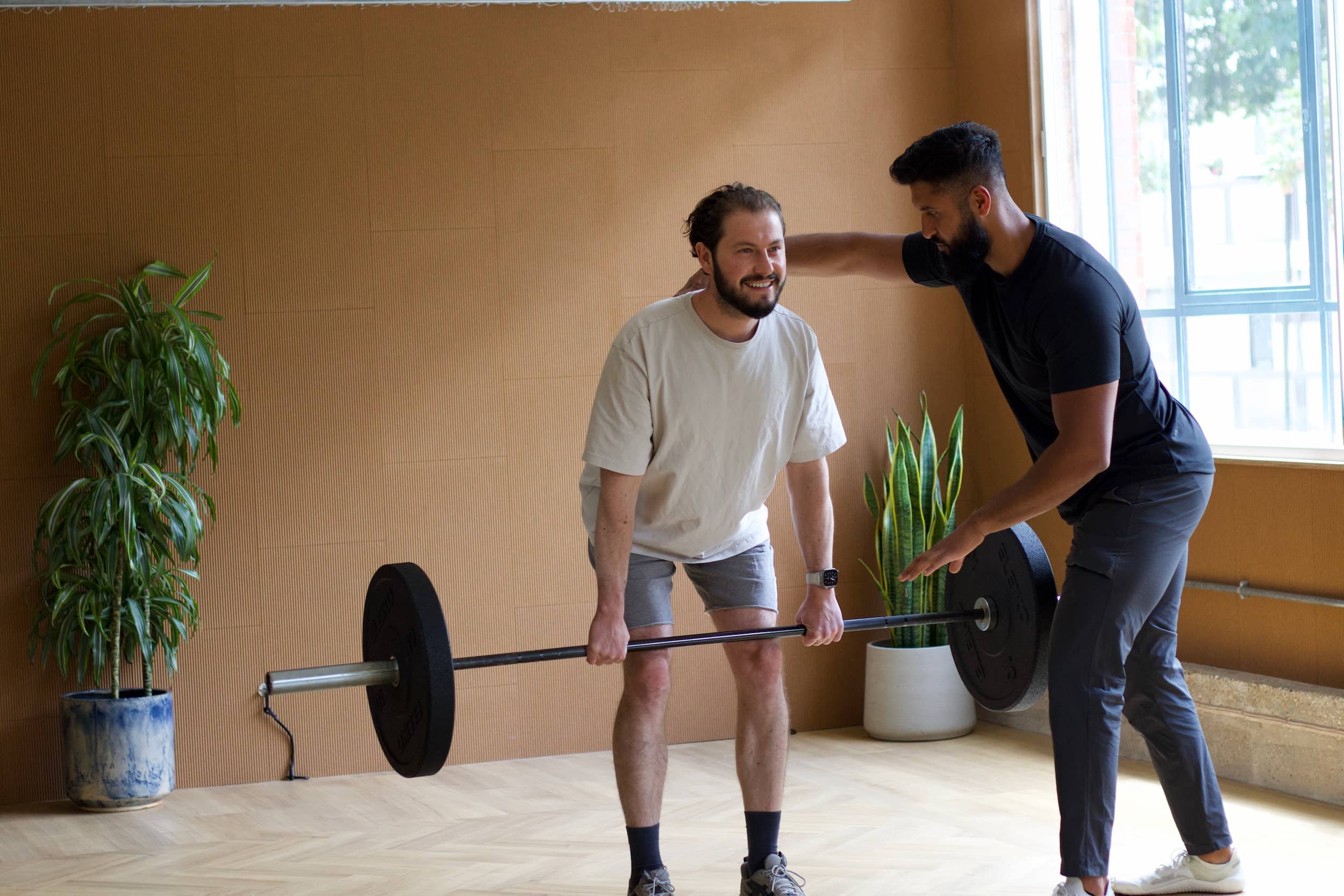Beginners Strength Training Guide
Rimon teaching his client how to deadlift
Strength training involves physical movements that use your body weight or resistance to increase muscle mass, strength, and endurance. Regardless of your goals, the primary aim is to put your muscles under tension to stimulate neuromuscular adaptations and promote muscle growth.
With regular sessions, your body adapts, so progressive overloads help improve not only your technique but also your strength in functional movements. This can help you achieve the lifestyle you want, whether it's reducing body fat, feeling more toned, or alleviating long-standing back or knee pain.
Our daily habits can stress our bodies and eventually impact our health and performance, affecting everything from climbing stairs to getting in and out of a car. In this article, we will cover the basics of strength training for beginners: what it is, why it’s important, and how to start.
Why is Strength Training Important for Beginners?
Strength training is crucial for beginners because it is foundational to achieving various fitness goals, such as fat loss, muscle gain, injury prevention, and recovery. It supports longevity, enhances health, and helps maintain a functional lifestyle.
The basic principle is to maintain or increase muscle mass, which in turn boosts bone density, reduces injury risk, and increases your natural metabolism. More muscle means more calories burned at rest, helping you stay healthy and functional.
Benefits of Strength Training for Beginners
Strength training offers numerous benefits, including:
Increased Mobility and Improved Posture: Helps you move and feel better.
Fat Reduction and Muscle Tone: Enhances body composition and appearance.
Increased Muscle Mass and Strength: Leads to a higher resting metabolic rate and improved control and stability in daily movements.
Bone Density and Tendon/Ligament Strength: Reduces injury risk in essential movements like sitting, standing, and climbing stairs.
Longevity of Benefits: Strength training permanently improves muscle cells, whereas cardio is repetitive and can strain joints.
Basic Strength Training Exercises
For beginners, seeking professional guidance initially is advisable. Start with bodyweight exercises to master technique, then progress to using kettlebells, dumbbells, and resistance machines. Some beginner exercises include:
Box Squats: Knee dominant, anterior chain.
Glute Bridges: Hip dominant, posterior chain.
Incline Push-Ups: Upper body push.
Seated Cable Rows: Upper body pull.
Deadbugs: Core.
Gradually increase resistance, repetitions, or reduce rest periods to continue improving strength.
Example of a Beginner’s Strength Workout
A beginner's strength workout should be a total body session, hitting key movement patterns for the lower and upper body, along with some core work. For example:
Warm-Up:
Movement prep to increase blood flow and heart rate, and address any corrective exercises like improving hip movement or glute activation.
Block 1: (3-4 rounds)
Box Squats x10-12
Incline Push-Ups x10-12
Deadbugs x20
Block 2: (3-4 rounds)
Glute Bridges x10-12
Seated Cable Rows x12-15
Shoulder Taps x20
Addressing Common Concerns
Will Strength Training Make Me Too Muscular? No, lifting weights won’t turn you into a bodybuilder unless that's your specific goal. Strength training can lead to muscle hypertrophy, but initially, improvements are mainly due to the nervous system becoming more efficient at recruiting motor units. Women, in particular, have different hormone profiles and are less likely to "bulk up" like men. A clean diet can also help reduce body fat percentage.
Want to Learn More?
If you're interested in learning more about strength training for beginners, feel free to contact us!

